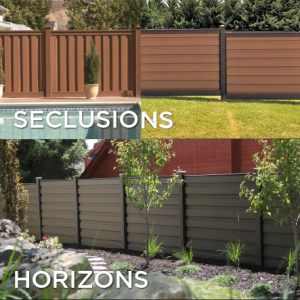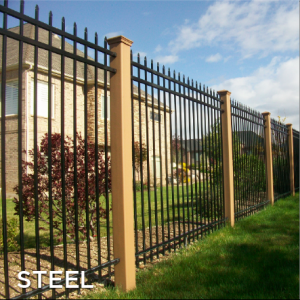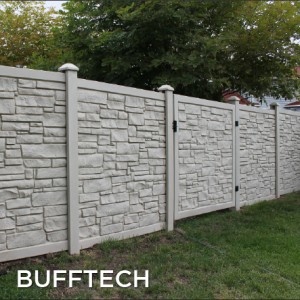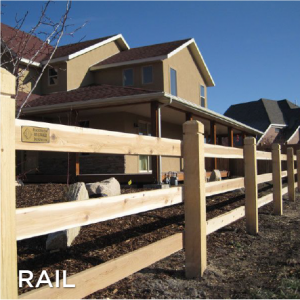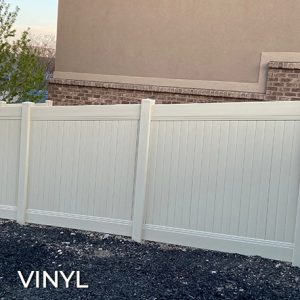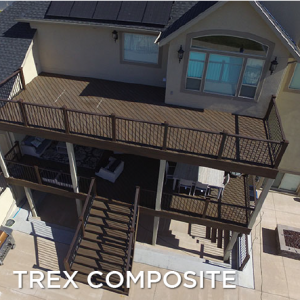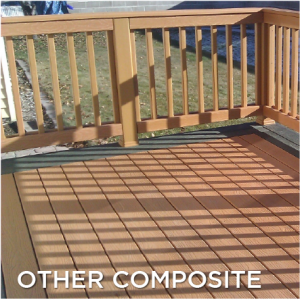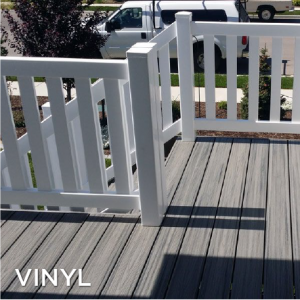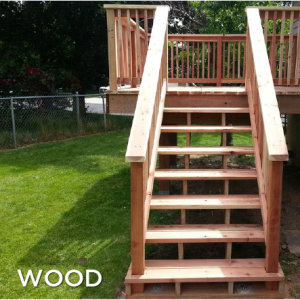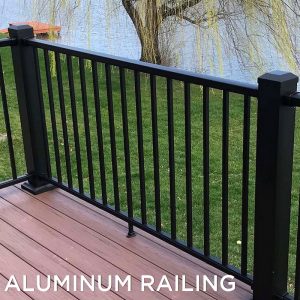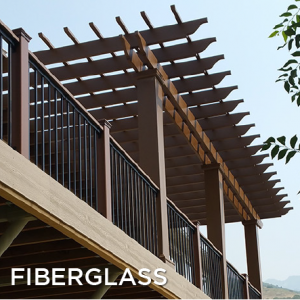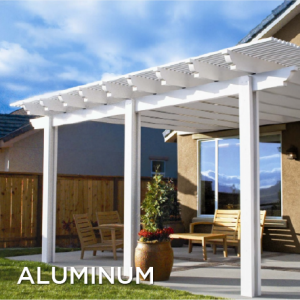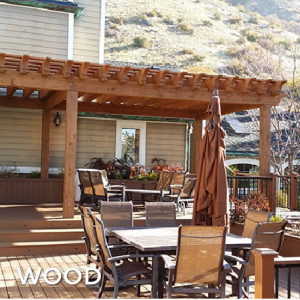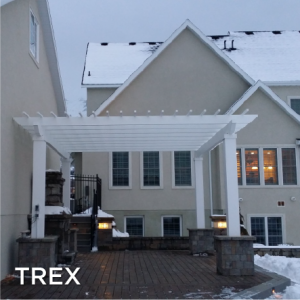Provo Iron Railing and Fence Materials
Iron railings and fences not only provide security and protection, but also add an elegant touch to any property. To ensure the longevity and aesthetic appeal of these structures, it’s vital to use high-quality materials. Understanding the different types of iron used in railings and fences can help homeowners make informed decisions when it comes to selecting the right materials.
Understanding Iron Railing and Fence Materials
The Importance of Quality Materials
When it comes to iron railings and fences, the quality of the materials used is paramount. Using inferior materials can result in a shorter lifespan for the structure, as well as potential safety hazards. High-quality materials ensure the durability and strength required to withstand harsh weather conditions and everyday wear and tear.
Iron railings and fences are not only functional but also add an aesthetic appeal to any property. They can enhance the overall look and feel of a home or commercial building, providing a sense of elegance and sophistication. However, it is crucial to choose the right materials to ensure that the investment is worthwhile and long-lasting.
Types of Iron Used in Railings and Fences
There are various types of iron used in railings and fences, each with its own strengths and weaknesses. Wrought iron, for example, is known for its timeless beauty and exceptional durability. It is a type of iron that is forged by hand, resulting in intricate designs and a unique, artisanal look. Wrought iron railings and fences can withstand extreme weather conditions, making them an excellent choice for outdoor applications.
Cast iron, on the other hand, offers a different set of advantages. It is made by pouring molten iron into molds, allowing for more intricate and detailed designs. Cast iron railings and fences are often used for decorative purposes, adding a touch of elegance to gardens, parks, and historical buildings. While cast iron may not be as durable as wrought iron, proper maintenance and regular inspections can help prolong its lifespan.
Another type of iron commonly used in railings and fences is mild steel. It is a versatile material that can be easily shaped and welded, making it a popular choice for custom designs. Mild steel railings and fences are often powder-coated or painted to enhance their appearance and protect them from rust and corrosion. This type of iron is more affordable compared to wrought iron and cast iron, making it a practical option for budget-conscious homeowners.
Understanding the characteristics of each type of iron can help homeowners choose the best option for their specific needs. Factors such as the location of the railing or fence, the desired aesthetic, and the budget should all be taken into consideration. Consulting with a professional ironworks company can provide valuable insights and guidance in selecting the right materials for a project.
Provo’s Iron Railing and Fence Industry
History and Evolution
The iron railing and fence industry in Provo has a rich heritage that dates back decades. Skilled craftsmen have honed their techniques over generations, resulting in exquisite designs and superior craftsmanship. Provo’s iron railing and fence industry continues to thrive, offering homeowners a wide range of options to enhance their property.
Provo’s iron railing and fence industry has a fascinating history that is deeply intertwined with the city’s growth and development. In the early days, when Provo was just a small settlement, iron railings and fences were primarily functional, serving as a means to mark boundaries and provide security. However, as the city expanded and its architectural landscape evolved, iron railings and fences became more than just practical structures – they became works of art.
During the late 19th century, Provo experienced a surge in iron railing and fence production, thanks to the influx of skilled craftsmen from Europe. These craftsmen brought with them their unique styles and techniques, blending traditional European designs with local influences. The result was a fusion of elegance and durability that set Provo’s iron railings and fences apart from the rest.
Over the years, Provo’s iron railing and fence industry has adapted to changing trends and demands. From the ornate and elaborate designs of the Victorian era to the sleek and minimalist styles of the modern age, Provo’s craftsmen have continuously pushed the boundaries of creativity and innovation. Today, homeowners can choose from a wide array of designs, ranging from traditional and classic to contemporary and cutting-edge.
Current Market Trends
As with any industry, the iron railing and fence market is influenced by trends. In Provo, homeowners are increasingly gravitating towards minimalist designs that blend seamlessly with modern architecture. The clean lines and simplicity of these designs create a sense of harmony and balance, enhancing the overall aesthetic appeal of a property.
However, while minimalist designs are gaining popularity, traditional and ornate designs still hold their charm in Provo. Many homeowners appreciate the timeless beauty and intricate details that these designs offer. Whether it’s a Victorian-inspired iron fence or a handcrafted railing with intricate scrollwork, these traditional designs add a touch of elegance and sophistication to any home.
In addition to design preferences, Provo’s iron railing and fence industry is also influenced by factors such as sustainability and durability. Homeowners are increasingly seeking environmentally-friendly options, such as iron railings and fences made from recycled materials. Additionally, there is a growing demand for low-maintenance products that can withstand the harsh weather conditions of Provo, ensuring long-lasting beauty and functionality.
Provo’s iron railing and fence industry is not just about providing functional and aesthetically pleasing structures – it is a testament to the city’s craftsmanship and commitment to quality. With a rich history and a thriving market, Provo continues to be a hub for iron railing and fence enthusiasts, offering a diverse range of options to suit every homeowner’s taste and style.
Selecting the Right Iron Railing and Fence Materials
Factors to Consider
Choosing the right iron railing and fence materials involves considering several factors. These include the purpose of the structure, its location, and the desired aesthetic. For instance, if security is the primary concern, using wrought iron with strong bars and sturdy locks is recommended. On the other hand, for decorative purposes, cast iron with intricate scrollwork can be the perfect choice.
Maintenance and Durability
Iron railings and fences require regular maintenance to keep them looking their best and to prevent rust. Applying a protective coating, such as a rust-resistant paint or powder coating, can significantly extend the lifespan of these structures. Additionally, routine inspections and repairs of any damages or loose components are essential for maintaining their durability over time.
Installation Process of Iron Railings and Fences
Pre-installation Preparations
Prior to installation, careful planning and preparation are necessary to ensure a smooth process. This includes measuring the area, obtaining any necessary permits, and ensuring the site is clear of obstacles. Consulting with a professional installer can help homeowners avoid common pitfalls and ensure that the installation meets local building codes.
Step-by-step Installation Guide
The installation process involves several steps, starting with marking the location of the posts, followed by digging the holes and filling them with concrete for stability. Once the concrete has cured, attaching the railings and fences to the posts can be done using various methods, such as welding or using brackets. It’s crucial to follow the manufacturer’s instructions and ensure a secure installation for optimal performance.
Care and Maintenance of Iron Railings and Fences
Routine Cleaning Tips
To keep iron railings and fences looking their best, regular cleaning is essential. This can be done by using a mild detergent and warm water mixture, applied with a soft brush or sponge. After cleaning, thoroughly rinse the structure with water to remove any residue. Avoid using abrasive cleaners or tools that can scratch the iron’s surface.
Preventing and Treating Rust
Rust is the nemesis of iron structures, but with proper care, it can be prevented and treated. Applying a rust-inhibiting primer and paint can provide an additional layer of protection. If rust does occur, it’s important to address it promptly by removing the affected area and repainting it. Regular inspections and addressing any signs of rust early on can help maintain the integrity of the railing or fence.
By understanding iron railing and fence materials, homeowners in Provo can make informed decisions that will enhance the beauty and value of their properties. Whether it’s selecting the right materials, ensuring a professional installation, or following a proper maintenance routine, attention to detail is key in maximizing the longevity and aesthetics that iron railings and fences offer.
